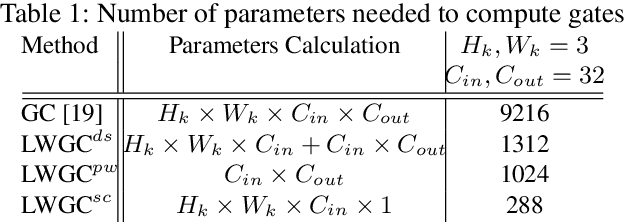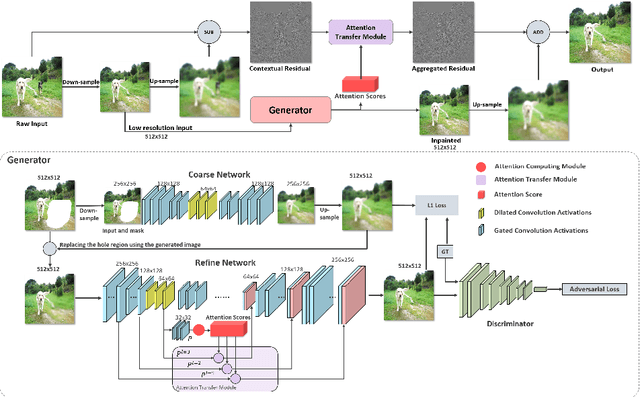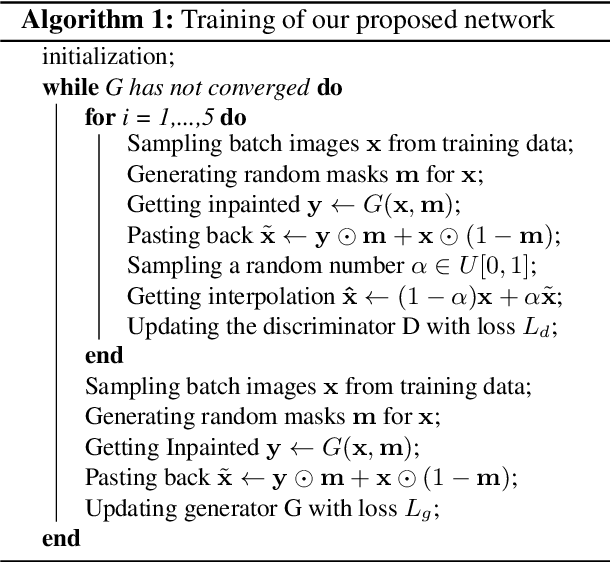Qiang Tang
A Multi-Dataset Evaluation of Models for Automated Vulnerability Repair
Jun 05, 2025Abstract:Software vulnerabilities pose significant security threats, requiring effective mitigation. While Automated Program Repair (APR) has advanced in fixing general bugs, vulnerability patching, a security-critical aspect of APR remains underexplored. This study investigates pre-trained language models, CodeBERT and CodeT5, for automated vulnerability patching across six datasets and four languages. We evaluate their accuracy and generalization to unknown vulnerabilities. Results show that while both models face challenges with fragmented or sparse context, CodeBERT performs comparatively better in such scenarios, whereas CodeT5 excels in capturing complex vulnerability patterns. CodeT5 also demonstrates superior scalability. Furthermore, we test fine-tuned models on both in-distribution (trained) and out-of-distribution (unseen) datasets. While fine-tuning improves in-distribution performance, models struggle to generalize to unseen data, highlighting challenges in robust vulnerability detection. This study benchmarks model performance, identifies limitations in generalization, and provides actionable insights to advance automated vulnerability patching for real-world security applications.
StyleMorpheus: A Style-Based 3D-Aware Morphable Face Model
Mar 14, 2025Abstract:For 3D face modeling, the recently developed 3D-aware neural rendering methods are able to render photorealistic face images with arbitrary viewing directions. The training of the parametric controllable 3D-aware face models, however, still relies on a large-scale dataset that is lab-collected. To address this issue, this paper introduces "StyleMorpheus", the first style-based neural 3D Morphable Face Model (3DMM) that is trained on in-the-wild images. It inherits 3DMM's disentangled controllability (over face identity, expression, and appearance) but without the need for accurately reconstructed explicit 3D shapes. StyleMorpheus employs an auto-encoder structure. The encoder aims at learning a representative disentangled parametric code space and the decoder improves the disentanglement using shape and appearance-related style codes in the different sub-modules of the network. Furthermore, we fine-tune the decoder through style-based generative adversarial learning to achieve photorealistic 3D rendering quality. The proposed style-based design enables StyleMorpheus to achieve state-of-the-art 3D-aware face reconstruction results, while also allowing disentangled control of the reconstructed face. Our model achieves real-time rendering speed, allowing its use in virtual reality applications. We also demonstrate the capability of the proposed style-based design in face editing applications such as style mixing and color editing. Project homepage: https://github.com/ubc-3d-vision-lab/StyleMorpheus.
Deep learning based infrared small object segmentation: Challenges and future directions
Feb 20, 2025Abstract:Infrared sensing is a core method for supporting unmanned systems, such as autonomous vehicles and drones. Recently, infrared sensors have been widely deployed on mobile and stationary platforms for detection and classification of objects from long distances and in wide field of views. Given its success in the vision image analysis domain, deep learning has also been applied for object recognition in infrared images. However, techniques that have proven successful in visible light perception face new challenges in the infrared domain. These challenges include extremely low signal-to-noise ratios in infrared images, very small and blurred objects of interest, and limited availability of labeled/unlabeled training data due to the specialized nature of infrared sensors. Numerous methods have been proposed in the literature for the detection and classification of small objects in infrared images achieving varied levels of success. There is a need for a survey paper that critically analyzes existing techniques in this domain, identifies unsolved challenges and provides future research directions. This paper fills the gap and offers a concise and insightful review of deep learning-based methods. It also identifies the challenges faced by existing infrared object segmentation methods and provides a structured review of existing infrared perception methods from the perspective of these challenges and highlights the motivations behind the various approaches. Finally, this review suggests promising future directions based on recent advancements within this domain.
Gaussian Deja-vu: Creating Controllable 3D Gaussian Head-Avatars with Enhanced Generalization and Personalization Abilities
Sep 26, 2024



Abstract:Recent advancements in 3D Gaussian Splatting (3DGS) have unlocked significant potential for modeling 3D head avatars, providing greater flexibility than mesh-based methods and more efficient rendering compared to NeRF-based approaches. Despite these advancements, the creation of controllable 3DGS-based head avatars remains time-intensive, often requiring tens of minutes to hours. To expedite this process, we here introduce the ``Gaussian D\'ej\`a-vu" framework, which first obtains a generalized model of the head avatar and then personalizes the result. The generalized model is trained on large 2D (synthetic and real) image datasets. This model provides a well-initialized 3D Gaussian head that is further refined using a monocular video to achieve the personalized head avatar. For personalizing, we propose learnable expression-aware rectification blendmaps to correct the initial 3D Gaussians, ensuring rapid convergence without the reliance on neural networks. Experiments demonstrate that the proposed method meets its objectives. It outperforms state-of-the-art 3D Gaussian head avatars in terms of photorealistic quality as well as reduces training time consumption to at least a quarter of the existing methods, producing the avatar in minutes.
One-Shot Learning for Pose-Guided Person Image Synthesis in the Wild
Sep 15, 2024



Abstract:Current Pose-Guided Person Image Synthesis (PGPIS) methods depend heavily on large amounts of labeled triplet data to train the generator in a supervised manner. However, they often falter when applied to in-the-wild samples, primarily due to the distribution gap between the training datasets and real-world test samples. While some researchers aim to enhance model generalizability through sophisticated training procedures, advanced architectures, or by creating more diverse datasets, we adopt the test-time fine-tuning paradigm to customize a pre-trained Text2Image (T2I) model. However, naively applying test-time tuning results in inconsistencies in facial identities and appearance attributes. To address this, we introduce a Visual Consistency Module (VCM), which enhances appearance consistency by combining the face, text, and image embedding. Our approach, named OnePoseTrans, requires only a single source image to generate high-quality pose transfer results, offering greater stability than state-of-the-art data-driven methods. For each test case, OnePoseTrans customizes a model in around 48 seconds with an NVIDIA V100 GPU.
Towards Secure and Usable 3D Assets: A Novel Framework for Automatic Visible Watermarking
Aug 31, 2024Abstract:3D models, particularly AI-generated ones, have witnessed a recent surge across various industries such as entertainment. Hence, there is an alarming need to protect the intellectual property and avoid the misuse of these valuable assets. As a viable solution to address these concerns, we rigorously define the novel task of automated 3D visible watermarking in terms of two competing aspects: watermark quality and asset utility. Moreover, we propose a method of embedding visible watermarks that automatically determines the right location, orientation, and number of watermarks to be placed on arbitrary 3D assets for high watermark quality and asset utility. Our method is based on a novel rigid-body optimization that uses back-propagation to automatically learn transforms for ideal watermark placement. In addition, we propose a novel curvature-matching method for fusing the watermark into the 3D model that further improves readability and security. Finally, we provide a detailed experimental analysis on two benchmark 3D datasets validating the superior performance of our approach in comparison to baselines. Code and demo are available.
CodeLens: An Interactive Tool for Visualizing Code Representations
Jul 27, 2023Abstract:Representing source code in a generic input format is crucial to automate software engineering tasks, e.g., applying machine learning algorithms to extract information. Visualizing code representations can further enable human experts to gain an intuitive insight into the code. Unfortunately, as of today, there is no universal tool that can simultaneously visualise different types of code representations. In this paper, we introduce a tool, CodeLens, which provides a visual interaction environment that supports various representation methods and helps developers understand and explore them. CodeLens is designed to support multiple programming languages, such as Java, Python, and JavaScript, and four types of code representations, including sequence of tokens, abstract syntax tree (AST), data flow graph (DFG), and control flow graph (CFG). By using CodeLens, developers can quickly visualize the specific code representation and also obtain the represented inputs for models of code. The Web-based interface of CodeLens is available at http://www.codelens.org. The demonstration video can be found at http://www.codelens.org/demo.
Spatial-Temporal Residual Aggregation for High Resolution Video Inpainting
Nov 05, 2021



Abstract:Recent learning-based inpainting algorithms have achieved compelling results for completing missing regions after removing undesired objects in videos. To maintain the temporal consistency among the frames, 3D spatial and temporal operations are often heavily used in the deep networks. However, these methods usually suffer from memory constraints and can only handle low resolution videos. We propose STRA-Net, a novel spatial-temporal residual aggregation framework for high resolution video inpainting. The key idea is to first learn and apply a spatial and temporal inpainting network on the downsampled low resolution videos. Then, we refine the low resolution results by aggregating the learned spatial and temporal image residuals (details) to the upsampled inpainted frames. Both the quantitative and qualitative evaluations show that we can produce more temporal-coherent and visually appealing results than the state-of-the-art methods on inpainting high resolution videos.
Animating Through Warping: an Efficient Method for High-Quality Facial Expression Animation
Aug 01, 2020



Abstract:Advances in deep neural networks have considerably improved the art of animating a still image without operating in 3D domain. Whereas, prior arts can only animate small images (typically no larger than 512x512) due to memory limitations, difficulty of training and lack of high-resolution (HD) training datasets, which significantly reduce their potential for applications in movie production and interactive systems. Motivated by the idea that HD images can be generated by adding high-frequency residuals to low-resolution results produced by a neural network, we propose a novel framework known as Animating Through Warping (ATW) to enable efficient animation of HD images. Specifically, the proposed framework consists of two modules, a novel two-stage neural-network generator and a novel post-processing module known as Animating Through Warping (ATW). It only requires the generator to be trained on small images and can do inference on an image of any size. During inference, an HD input image is decomposed into a low-resolution component(128x128) and its corresponding high-frequency residuals. The generator predicts the low-resolution result as well as the motion field that warps the input face to the desired status (e.g., expressions categories or action units). Finally, the ResWarp module warps the residuals based on the motion field and adding the warped residuals to generates the final HD results from the naively up-sampled low-resolution results. Experiments show the effectiveness and efficiency of our method in generating high-resolution animations. Our proposed framework successfully animates a 4K facial image, which has never been achieved by prior neural models. In addition, our method generally guarantee the temporal coherency of the generated animations. Source codes will be made publicly available.
Contextual Residual Aggregation for Ultra High-Resolution Image Inpainting
May 19, 2020



Abstract:Recently data-driven image inpainting methods have made inspiring progress, impacting fundamental image editing tasks such as object removal and damaged image repairing. These methods are more effective than classic approaches, however, due to memory limitations they can only handle low-resolution inputs, typically smaller than 1K. Meanwhile, the resolution of photos captured with mobile devices increases up to 8K. Naive up-sampling of the low-resolution inpainted result can merely yield a large yet blurry result. Whereas, adding a high-frequency residual image onto the large blurry image can generate a sharp result, rich in details and textures. Motivated by this, we propose a Contextual Residual Aggregation (CRA) mechanism that can produce high-frequency residuals for missing contents by weighted aggregating residuals from contextual patches, thus only requiring a low-resolution prediction from the network. Since convolutional layers of the neural network only need to operate on low-resolution inputs and outputs, the cost of memory and computing power is thus well suppressed. Moreover, the need for high-resolution training datasets is alleviated. In our experiments, we train the proposed model on small images with resolutions 512x512 and perform inference on high-resolution images, achieving compelling inpainting quality. Our model can inpaint images as large as 8K with considerable hole sizes, which is intractable with previous learning-based approaches. We further elaborate on the light-weight design of the network architecture, achieving real-time performance on 2K images on a GTX 1080 Ti GPU. Codes are available at: Atlas200dk/sample-imageinpainting-HiFill.
 Add to Chrome
Add to Chrome Add to Firefox
Add to Firefox Add to Edge
Add to Edge